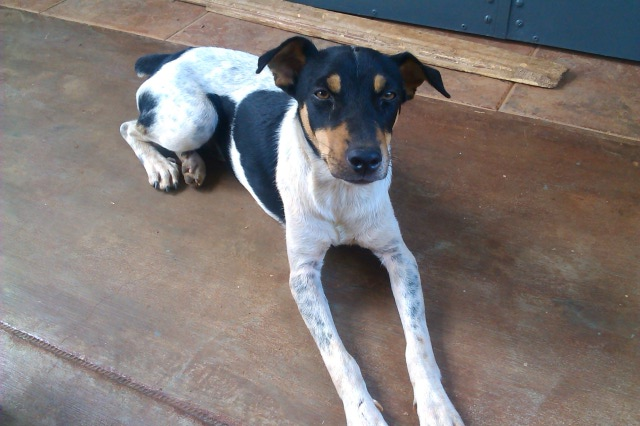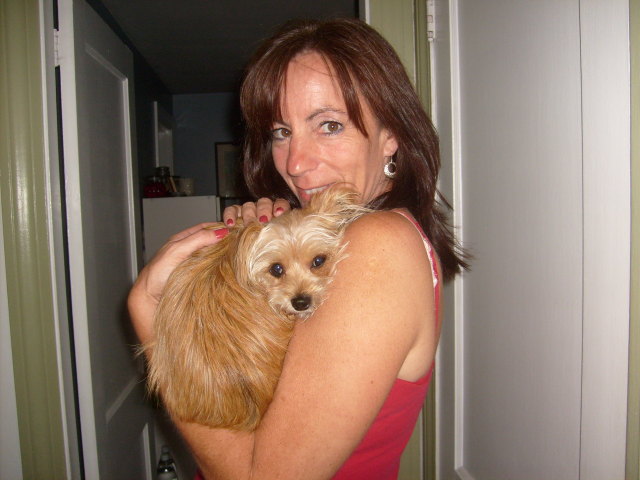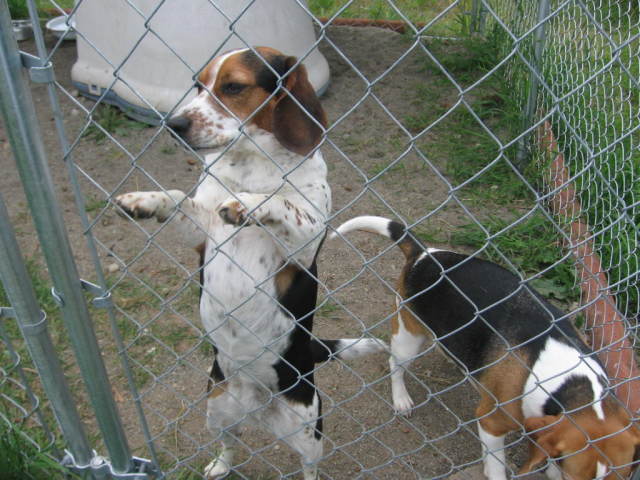QuestionI recently adopted an 8 month old Siberian Husky from a shelter. He is afraid to go outside. When we get him outside, he does nothing. He doesn't smell around or anything. He ends up going in the house. I've tried a prong collar, but it just makes him jump around more when we take him outside. Once he does go, he knows it was bad without you telling him. The few times I have gotten him to go outside, I've told him he was a good boy and gave him a treat. What else can I do?
Answer
Hi Dee,
An electronic collar isn't something you should be using on your recently adopted dog. You can plainly see it isn't working, so you should stop using it immediately, as it can cause a host of behavioral issues.
Anytime a dog arrives in it's newly adopted home, there is a period of adjustment. You need to give your dog time to adapt, and offer plenty of praise for things he does right. It's going to take time, there's no way to rush this. Telling your dog he's a "good boy", and giving him a treat, is a step in the right direction, you need more praise, more treats, and plenty of patience.
When you take your dog outside, if he doesn't go to the bathroom, don't let him have the run of your house when you go back inside! You're setting your dog up to have an accident, and to be punished! Instead, bring him back to the house, and either put him in a a dog crate, or contain him to part of a room with a child gate or two, or use an indoor door pen. In 15 minutes, take your dog back outside for another try.
If you crate your dog, make sure the crate is the correct size: big enough for him to stand up, turn around, and lay down, and not any bigger. If you opt for the baby gate or dog pen options lay a thick layer of newspaper down over the entire containment area.
It could be that your dog simply has never been trained to walk on a leash. With your patience, you can show your dog what's expected of him, and help him get over his fears, without electronic punishment, yelling, or any other negative methods. What you want to do is make your dog associate going outside as a positive, happy event.
Knowing your dog is fearful, keep your walks very short until you see progress, and only then lengthen the distance you walk. It might take a couple of days before you see progress. Coax him to walk a few steps by carrying extra special (and memorable) dog treats, such as pieces of hot dogs or cheese with you, and rewarding ANY good behavior. For the next few days of leash training, gently hold the leash as your dog walks around your home, letting him guide you and not pulling on the leash at all. If your dog refuses to move, try pulling a little on the leash and praising him for coming with you, even just a couple of steps. Don't forget to reward him with treats!
Remember it may take an adult dog longer to become accustomed to wearing a leash, and going on walks if he's never done so before.
Because your dog is afraid to walk on a leash, you'll need to take him out on a few confidence building training sessions on a leash. Don't take him out for a walk when you're running an errand and you're in a hurry. You'll get frustrated, and the right environment in which to teach your dog, and to overcome his fear and lack of confidence, will not be created this way.
When you're walking your dog and he suddenly stops, don't make the mistake of jerking the leash or trying to drag him along. This will just make him want to move away from you, not walking with you. The best way to deal with your dog when he isn't cooperating on his walk is to stand still, facing away from your dog. Put gentle pressure on the leash and wait. If your dog moves even an inch towards you, start praising him. Dogs learn best by positive reinforcement, not punishment.
Another option is to go to the end of the leash and kneel down, facing away from him. Wait for him to come to you and praise him every step of the way.
How long it takes your dog to start walking doesn't really matter, though it shouldn't take more than a minute or two. He eventually will resume walking. If he stops again, move another few feet away from him and repeat the process.
If you aren't seeing progress, then it's time to consult with a live dog trainer, rather than reading about what might be helpful. A dog trainer not only trains a dog, he or she trains you, the owner what you're doing wrong, and how to do it right. Ask your veterinarian or boarding kennel to refer you to a local dog trainer, or find one in your yellow pages under dog obedience.
Best of luck,
Patti

 Dry Dog Foods
Question
Prince Duke & Princess
I have two B
Dry Dog Foods
Question
Prince Duke & Princess
I have two B
 Dog breed confusion
Question
photo of Toby 1 photo of Toby 2
H
Dog breed confusion
Question
photo of Toby 1 photo of Toby 2
H
 Live worms came out in my dogs poop and he has some rashes?
Question
The Rashes
She is 15 months old and is
Live worms came out in my dogs poop and he has some rashes?
Question
The Rashes
She is 15 months old and is
 Training....
Question
Me with brady
My dog Brady is a year old, he i
Training....
Question
Me with brady
My dog Brady is a year old, he i
 AKC
Question
Bailey and Cocoa
Hi Im Ashley Sommer. I am ten
AKC
Question
Bailey and Cocoa
Hi Im Ashley Sommer. I am ten